Tintagel Castle rises above Cornwall’s wild north coast, brimming with dramatic scenery and mysterious legends. When I wandered across the windswept headland, I kept picturing King Arthur’s story unfolding among the ancient ruins and jagged cliffs. Even if you’re not a believer in legends, there’s something undeniably magical about this place.
Exploring Tintagel isn’t just about ticking off a historical site—it’s an adventure. Climbing those steep steps gives you sweeping views of the Atlantic and the rugged Cornish landscape. At every turn, I found myself imagining knights, sorcerers, and hidden secrets tucked away in the stone walls and caves.
If you want a spot that blends jaw-dropping scenery with a bit of myth and a real sense of adventure, Tintagel Castle belongs on your Cornwall bucket list.

Discovering Tintagel Castle: A Legendary Setting
Standing on Tintagel’s windswept cliffs, I get why this place grabs the imagination. Tales of ancient kings, epic battles, and old stone ruins swirl together here, making it one of the most mysterious places I’ve seen in Cornwall.
The Myths of King Arthur
Tintagel Castle is best known for its link to King Arthur. Stories claim Arthur was born here after Merlin helped Uther Pendragon reach the fortress. Sure, there’s no solid proof Arthur ever lived, but writers and poets from the Middle Ages kept the legend alive in British literature.
As I climbed the steep paths, the weather shifted quickly—sea mist rolling in made everything feel a bit magical. There’s a statue of a cloaked king on the edge of the headland; it’s not actually Arthur, but it brings the story to life. The legend adds a sense of possibility and wonder that’s hard to shake, even if you’re a skeptic.
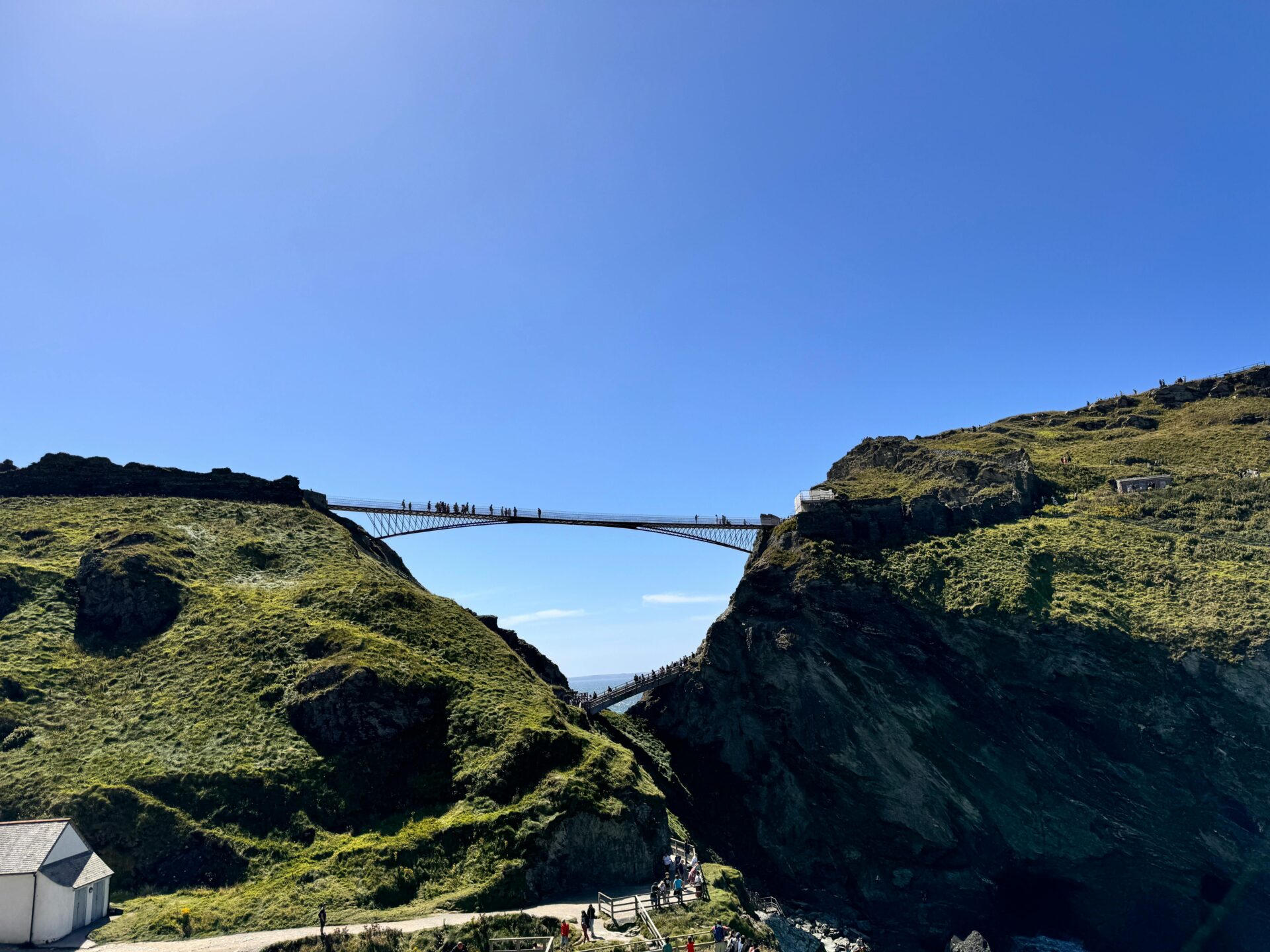
Historical Significance and Antiquity
Tintagel isn’t just about myths. People have lived on this headland since at least the 5th or 6th century. Archaeologists found pottery from the Mediterranean, so folks here traded with distant lands during early Christianity in Britain.
Most of the ruins you see today come from a medieval castle built in the 13th century by Richard, Earl of Cornwall. But some parts are much older. I loved seeing the layers of history—old stone walls, early settlement remains, and tunnels carved into the rock. Maps and little signposts helped me imagine life here a thousand years ago.
Tintagel’s Place in Cornish Folklore
Tintagel weaves itself into Cornwall’s folklore, not just Arthurian legend. Locals have told tales of giants, shipwrecks, and hidden caves for centuries. Beneath the castle’s cliffs, there’s Merlin’s Cave, which fills with seawater at high tide.
A lot of the legends here mix early Celtic beliefs with stories of Christian saints. That blend gives Tintagel its special atmosphere—every ruin and rocky outcrop seems to have its own tale. Even now, Cornish traditions and language live on in local festivals and storytelling sessions nearby, making each visit to Tintagel feel like you’re stepping into a living myth.

Exploring the Castle: What to See and Do
Setting foot on Tintagel’s headland puts you right in the heart of Cornwall’s wildest scenery. The castle ruins bring together legendary tales and real medieval stonework, while winding paths take you along cliffs and out to windswept nature trails.
The Dramatic Headland and Breathtaking Views
Stepping onto Tintagel’s clifftop honestly feels like entering another world. The land juts into the Atlantic, sea spray on the air, gulls wheeling above. When I stand near the edge, I see sheer drops to the crashing surf below—both beautiful and a bit nerve-wracking.
I always stop on the footbridge that links the mainland to the castle island. The view from there is famous—rocky coastline, turquoise water, and those Cornwall cliffs stretching away in all directions.
Highlights include:
- Photographing sunsets over the Atlantic
- Watching the tides shift below
- Soaking in panoramic sights from nearly every corner
A map at the entrance points out the safest paths and best viewpoints, so I don’t miss the most photogenic spots.

Architectural Features of Tintagel Castle
Parts of Tintagel date back to the 13th century, but the legends go back further. As I explore the broken stone walls, I try to picture knights, kings, and ancient builders at work. There’s something about running your hand along that rough, weathered stone with the sea as a backdrop.
The castle’s medieval gateway feels like a portal to another time. From there, I follow old paths to the ruins of the Great Hall, imagining feasts and Arthurian legends coming alive. The Early Medieval buildings on the island stand out, with helpful signs that explain what they used to be.
- Must-sees:
- The footbridge and castle entrance
- Remains of the chapel and halls
- Tower foundations and defensive walls
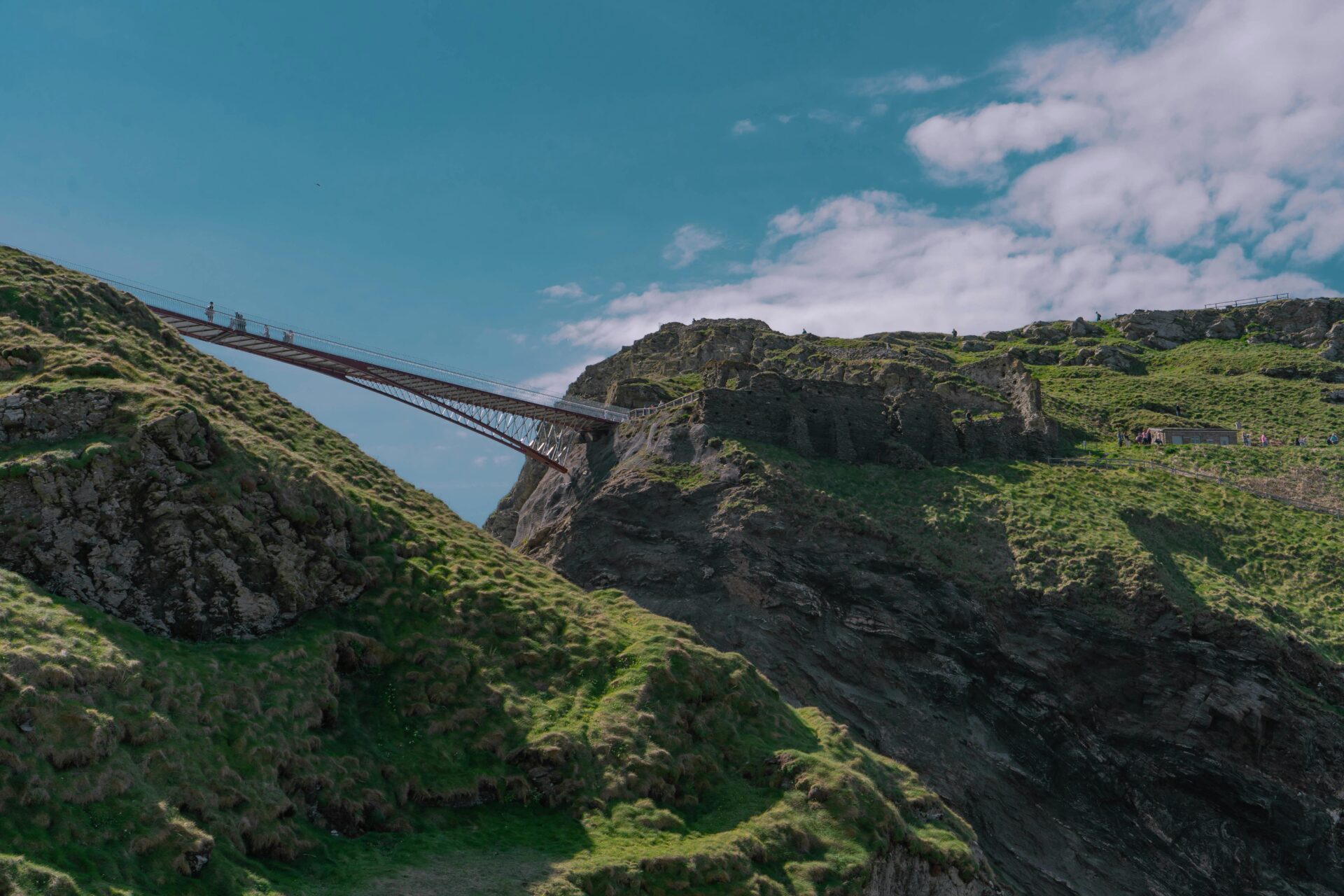
Nature Trails and Coastal Walks
Beyond the ruins, Tintagel is a dream for anyone who loves nature. I wander along trails that hug the cliff edge, wildflowers and heather underfoot. Sometimes, I spot seals on hidden beaches or butterflies flitting through the grass.
The coastal walk leads past mysterious caves and down to the rocky beach, where the water sparkles even on cloudy days. Footpaths can be steep and uneven, so sturdy shoes are a must. I take my time—maybe pausing for a picnic or just to listen to the waves below.
For a full day out, I bring a printed map and plan for changing weather. The mix of history, wild scenery, and fresh coastal air always makes me glad I explored Tintagel from every angle.

Journey Through Time: Tintagel’s Surroundings
Cornwall’s rugged north coast around Tintagel offers more than just legends. Its dramatic headland is surrounded by ancient churches, lost mines, bustling seaports, and natural wonders. Every path seems to reveal traces of both early Christianity and Cornwall’s working past.
Early Christian Sites and Ancient Churches
Tintagel’s story runs deep into early Christian Britain. When I walk nearby, I often spot the remains of old chapels and church foundations. St. Materiana’s Church is the most striking. It sits right on the cliff edge, dating to the Norman period but built where Christians worshipped as early as the 6th century.
The mix of ancient graves and hand-carved stones reminds me that this land was once a crossroads of faith. Villagers still remember stories of pilgrims visiting these windswept churches. You’ll see simple stone crosses marking burial grounds scattered around the countryside. I find their simplicity beautiful—it speaks to Cornwall’s place at the edge of the known world back in the Dark Ages.
West of Tintagel, places like Mawgan and Hayle have early Christian sites and grave markers. This headland links to a network that stretches across the West Country.
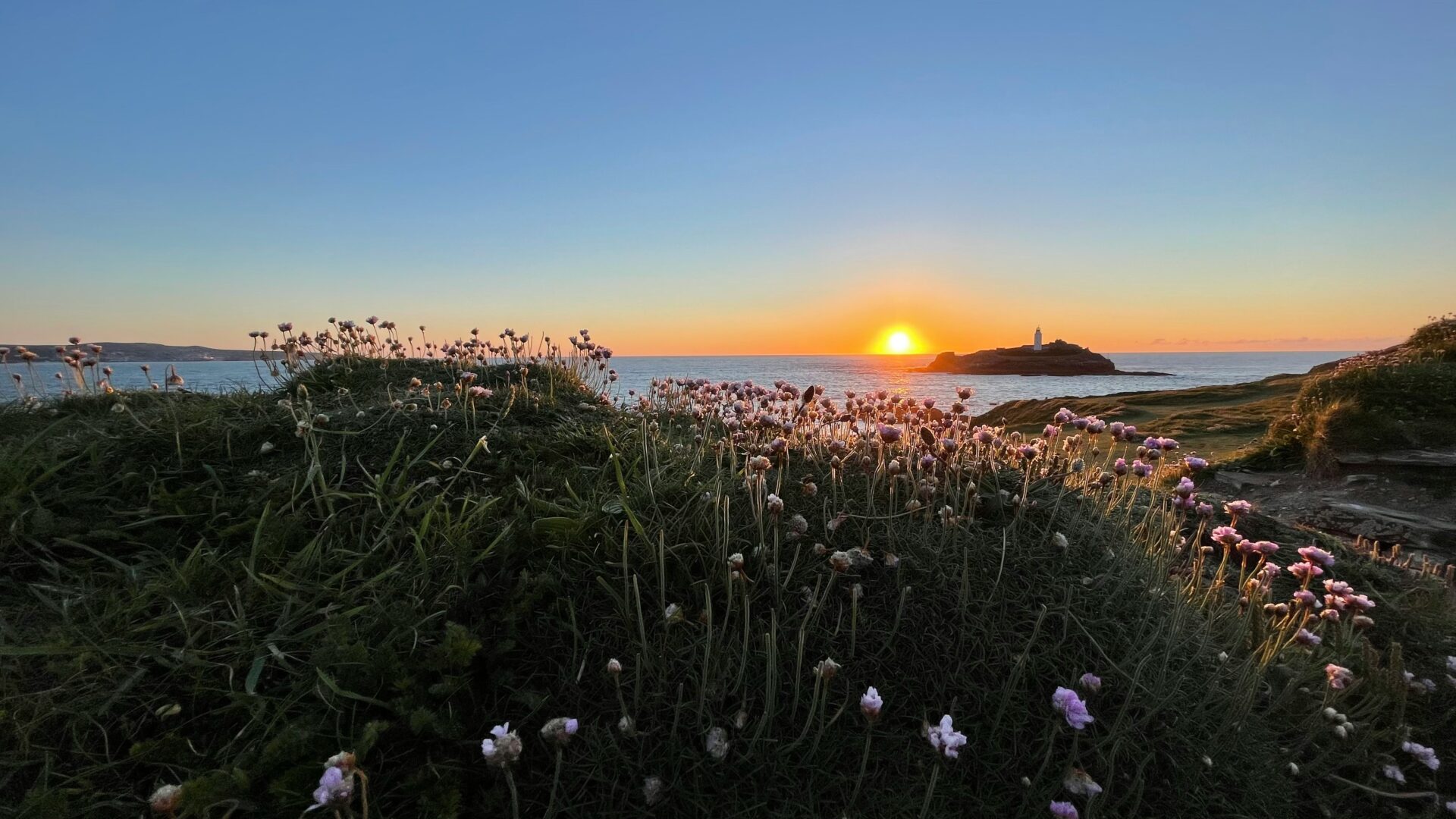
Mines, Seaports, and the Spirit of Cornwall
Along the coast, you can’t miss the ruins of old mines and hints of Cornwall’s industrial past. Clifftop chimneys and hidden tunnels show how people spent centuries digging for tin, and later, copper. I like to imagine miners climbing down those steep slopes every day, their lives shaped by the rocks beneath their feet.
Nearby harbors like Boscastle, Fowey, and Looe once bustled with ships carrying ore, fish, and goods out to the world. At Falmouth and Mount’s Bay, I watch fishing boats leave in the early morning—a scene that hasn’t really changed. St. Austell and Helston show off a different side, with rolling farmland set back from the cliffs. Each town—Hayle with its tidal estuary, or the quiet beaches around Lizard—adds a unique piece to Cornwall’s story.

Nearby Landmarks: Boscastle and St. Nectan’s Glen
Just a short drive away, Boscastle feels like a storybook village with its narrow harbor and clustered cottages. I enjoy wandering the Valency Valley, watching the tide change and ducks dart around the quay. The harbor, once a key seaport, is lined with old storehouses and a sense of history that hangs in the salty air.
A bit further inland, St. Nectan’s Glen is something else. A shady path winds through thick woodland to a tall, narrow waterfall pouring through a natural arch in the rock. Locals call it a sacred place—honestly, I get why. It’s easy to picture early settlers stopping here, drawing water, or leaving offerings in the mossy pools, blending nature, legend, and early faith.

Planning Your Adventure: Practical Tips for Visitors
Visiting Tintagel Castle takes a bit of planning, but it’s so worth it. From travel routes to packing advice and local tips, I’ve learned it helps to plan ahead for a smoother trip.
Getting to Tintagel from London and Beyond
Getting to Tintagel from London takes a while, but it’s pretty straightforward.
Usually, the train is fastest—I booked a seat from Paddington Station to Exeter, then caught another train to Bodmin Parkway. At Bodmin, local buses run to Tintagel village, though they’re not super frequent. Some folks hire a car at Exeter or Bodmin, which gives a lot more freedom. If you’re coming from southern Ireland, Wales, Southampton, Devonshire, or Dorset, the drive is scenic, but rural roads can be narrow and winding. I had to allow extra time for slow tractors and local traffic. Honestly, the journey is part of the adventure, especially if you take in the rolling hills and coastline along the way.
| Starting Point | Options | Approximate Travel Time |
|---|---|---|
| London | Train+bus or drive | 4.5–6 hrs |
| Exeter | Train+bus or drive | 2–2.5 hrs |
| Southampton | Direct drive (car hire best) | 4–5 hrs |
| Wales/Ireland | Ferry/train/drive (mixed modes) | 5+ hrs |

Travel Essentials: What to Pack and Expect
Cornish weather changes fast, even in summer.
I always pack layers: a waterproof jacket, comfy hiking boots, and a hat for those windy cliffs. You’ll need to cross a footbridge and tackle a lot of steps—at least 140 at one point—so I keep my backpack light with just the basics: water, snacks, and a camera. A portable phone charger helps, since I take way too many photos.
The castle grounds are uneven and can get slippery after rain. I’d skip the umbrella—the wind will just turn it inside out. I check the weather before leaving and book tickets online to avoid missing out, since entry slots can sell out, especially during school holidays.

Accessibility and Navigating the Area
Tintagel’s landscape is beautiful but steep.
There’s a one-way route around the site, so everyone climbs the long set of steep steps at the end. For visitors with mobility issues, the high cliffs and uneven paths can be tough. The English Heritage website has a full access guide, and the staff at the entrance are happy to help if you need info.
A Land Rover shuttle (for a small fee) runs from the ticket office to the base of the island, but not all paths are step-free. When I visited, I found the walk from the village to the site fine, but I saw others use the shuttle, especially families with kids or older folks. It’s smart to wear sturdy shoes and just go at your own pace.

Local Community and Where to Stay
Tintagel’s a small village, but it really comes alive in summer.
Locals are friendly—most shopkeepers and café staff love helping travelers out. I had some great chats with people who knew all the quiet walks and where to find the best Cornish pasties. Small hotels, B&Bs, and self-catering cottages fill up fast, especially when the crowds roll in, so booking ahead is essential.
If you’re into camping, there are some nearby campsites that offer a more laid-back, rustic vibe.
While you’re staying here, it’s good to bring a little patience. The popular spots get busy, and parking can be a headache sometimes.
Grabbing coffee at the bakery or picking up handmade crafts from locals really makes you feel like you’re part of the scene, even if it’s just for a weekend.
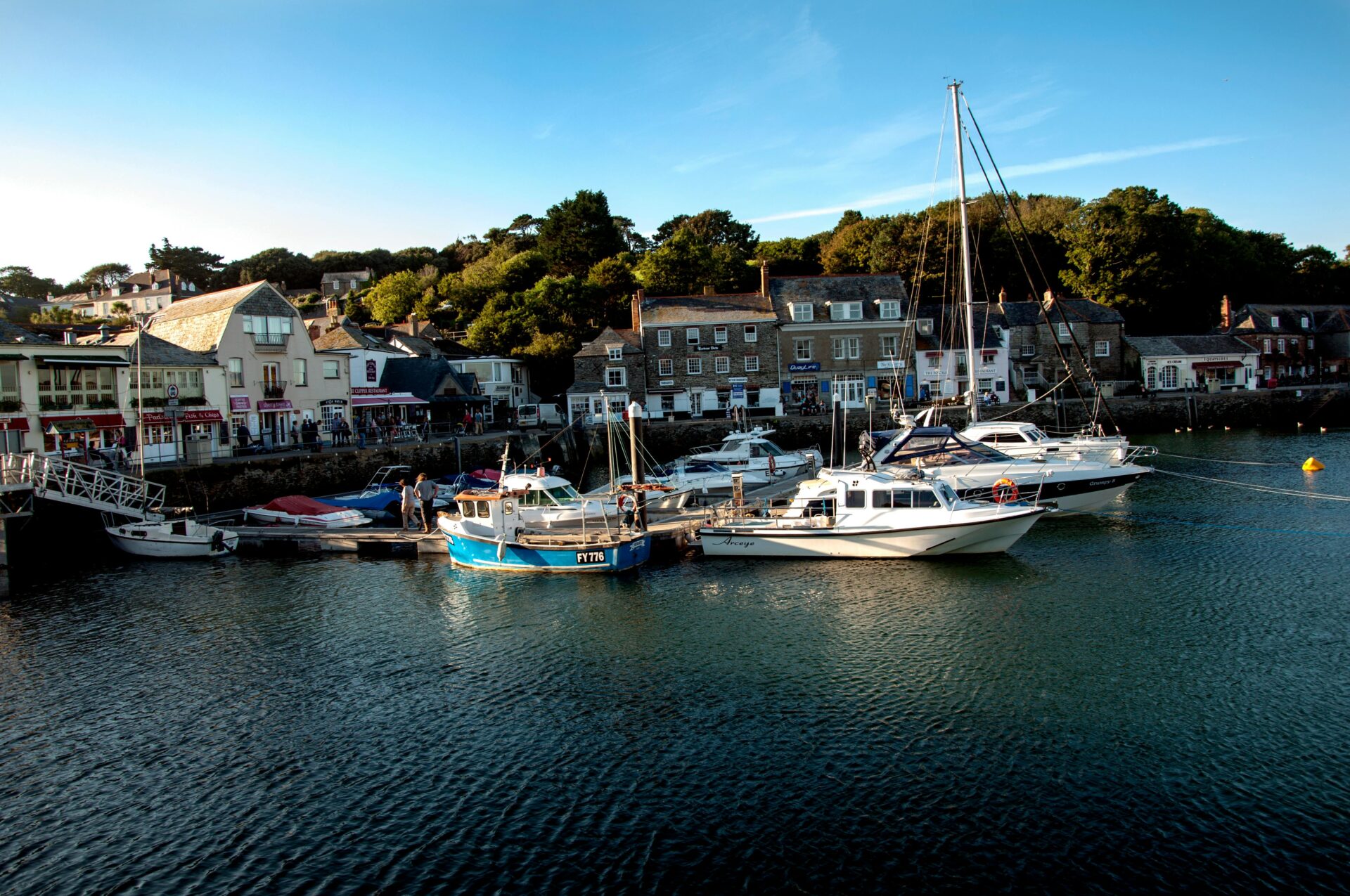
Cultural Echoes: Tintagel in Literature, Art, and Modern Media
Stories about Tintagel Castle have inspired writers, artists, and scientists for centuries.
Whether it’s old legends, detailed illustrations, or new archaeological digs, I keep running into Tintagel in unexpected places—a sign it just won’t let go of our imaginations.
Arthurian Tales and Legends in Storytelling
For readers like me, Tintagel always brings King Arthur to mind.
Classic books often say Arthur was born here. Geoffrey of Monmouth’s Historia Regum Britanniae first connected Arthur to this wild headland, kicking off centuries of tales about magic and courage.
Modern novels, like the ones by Mary Stewart, reimagine these myths with vivid scenes—windswept cliffs, hidden caves, all that good stuff. Writers love using Tintagel’s dramatic scenery for quests and secrets.
Even kids’ books and comics, from old legends to new fantasy, use Tintagel as a backdrop for daring rescues and magical discoveries.
When I walked through the ruins, I could almost see wizards, knights, and legendary kings wandering in the mist. No wonder storytellers can’t resist coming back here.
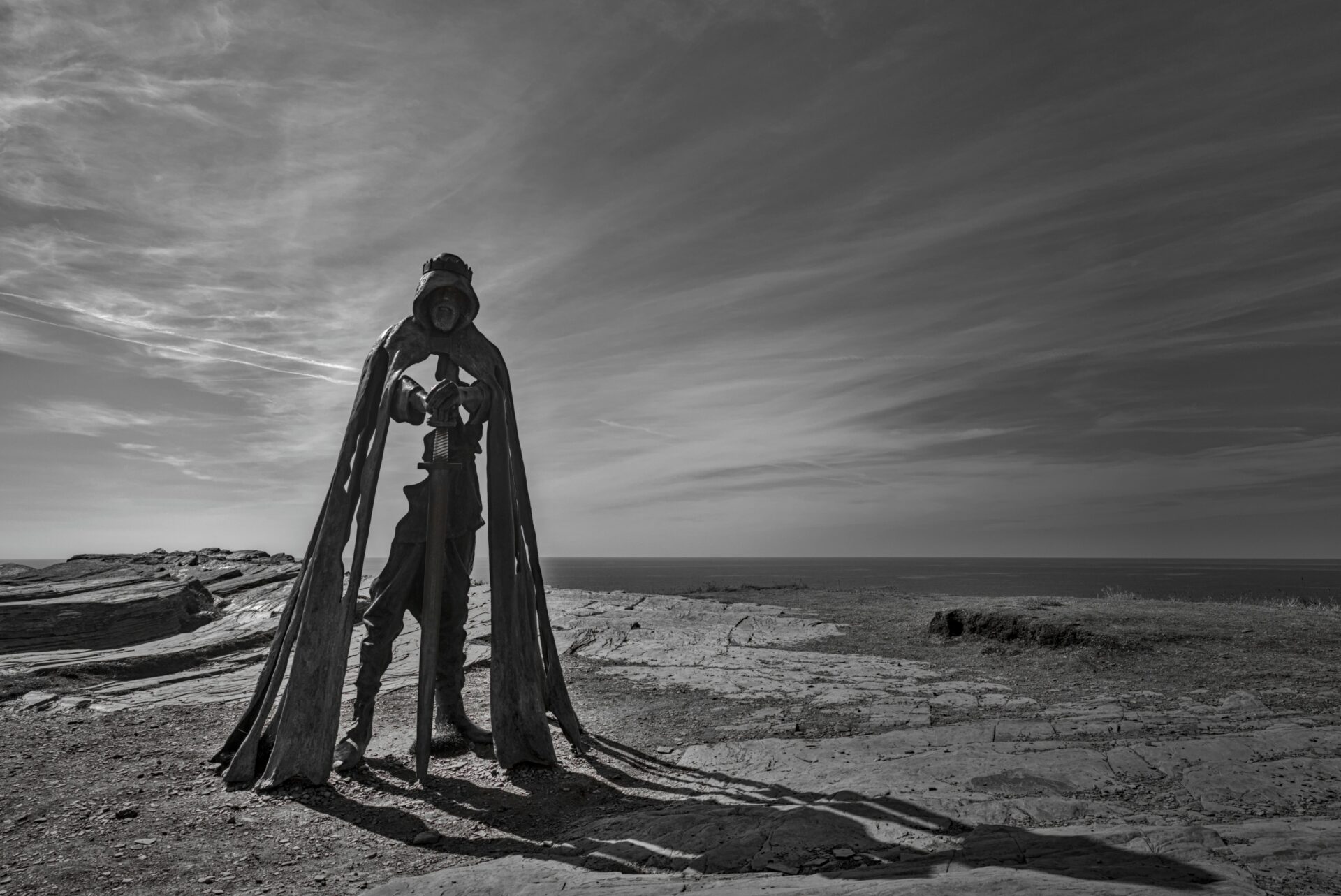
Illustrations, Maps, and the Castle’s Place in Popular Culture
Artists have filled old journals, guidebooks, and even art blogs with their takes on Tintagel.
Nineteenth-century painters adored the dramatic sea views, often painting the ruins perched above rough waves. I always spot the ruins in these images—they look a bit mystical, sort of otherworldly.
Maps have pointed people to Tintagel for ages. Early nautical charts marked the cliffs, and now modern apps still guide travelers straight to the site.
Tintagel shows up everywhere in pop culture. Documentaries, magazines, and movies use the castle to spark a sense of mystery and adventure.
If you poke around local shops, you’ll find everything from wooden bookmarks to illustrated puzzles with Tintagel’s unmistakable outline.
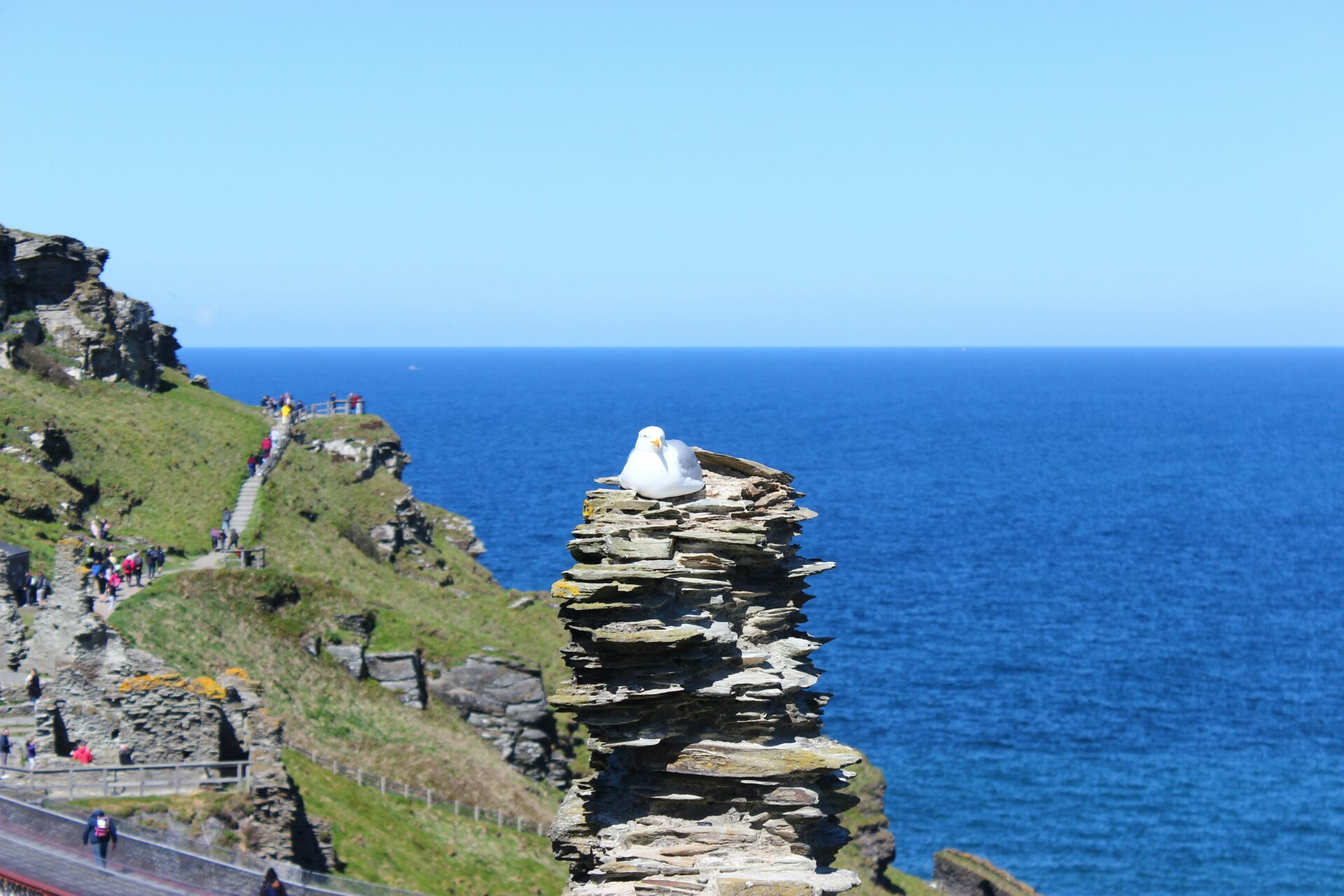
Modern Science and Ongoing Archaeological Discoveries
Modern science keeps adding new twists to Tintagel’s story. Archaeologists regularly dig up artifacts such as pottery, tools, and even imported items from distant lands.
These finds make it clear—Tintagel was a serious trading hub back in the day. I’ve seen scholarly journals and TV documentaries shine a spotlight on these new discoveries.
English Heritage and local experts often team up to support the digs. They uncover ancient buildings and glimpses of daily life from over a thousand years ago, peeling away the layers between legend and fact.
Even if you’re just wandering through, you’ll spot information boards and interactive displays packed with the latest research. There’s something thrilling about exploring a castle where myth, history, and science all collide.

